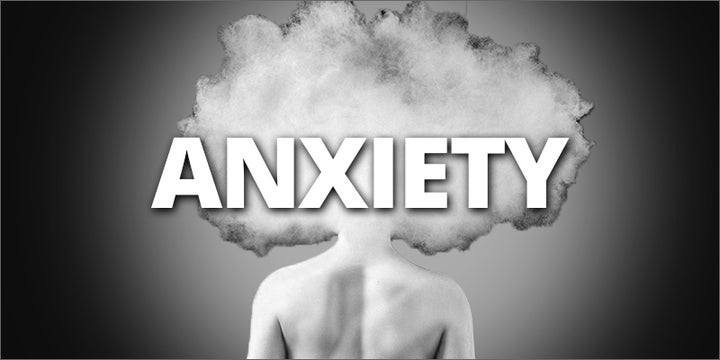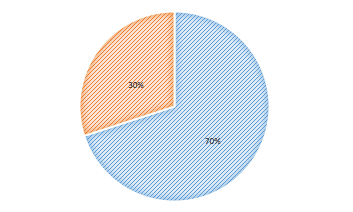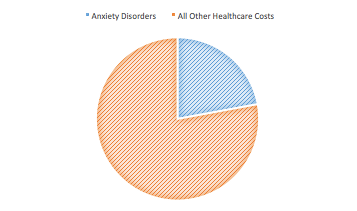
“It’s all in your head.”
“You’re just nervous.”
“Take a chill pill.”
These are just some of the dismissive comments someone with an anxiety disorder might hear.
Anxiety Is As Serious As Depression, But Most People Don’t Know It
Despite the fact that anxiety disorders are the most common mental health disorders, they still aren’t taken very seriously. In 2015, the Anxiety and Depression Association of America (ADAA) conducted a poll and found that 90% of Americans recognize the link between depression and suicide. When the pollsters asked about anxiety disorders, only 50% of respondents knew there was a link between anxiety disorders and death from suicide.

The poll found that depression and bipolar disorder are seen as serious illnesses by the majority of Americans. The same cannot be said for anxiety disorders. That’s troubling for a couple of reasons.
Anxiety Disorders Linked To Death From Suicide
A study conducted by the National Institutes of Health (NIH) found that 70% of people reporting a history of suicide had a diagnosable anxiety disorder. Anxiety disorders and depression can be an especially dangerous combination when co-occurring.
Ignoring this link between anxiety and suicide is literally dangerous.

Anxiety Interferes With Quality Of Life
Setting aside the 70% link to suicide, anxiety disorders can have major and significant impacts on a person’s quality of life. In fact, disorders like social anxiety disorder, panic disorder (and agoraphobia), generalized anxiety disorder, and OCD can seriously interfere with employment, academics, and personal relationships.
Additionally, anxiety disorders cost Americans more than $42 billion a year, which is almost one-third of the country's total health costs. According to the ADAA, “more than $22.84 billion of those costs are associated with the repeated use of health care services; people with anxiety disorders seek relief for symptoms that mimic physical illnesses.”

Furthermore, people with anxiety disorders are up to five times more likely to visit a doctor and six times more likely to be hospitalized for psychiatric disorders than those who do not suffer from anxiety disorders.
Most People Don’t Receive Treatment
While anxiety disorders can be serious, only 1-in-3 people with a diagnosable anxiety disorder receive treatment. That translates to 26 million people who suffer in silence and without professional help ... each and every year.
The reasons people don’t receive treatment are numerous and complex. Cost can be a stumbling block. So can location. People in rural areas have less access to professional care and often have to travel great distances in order to recieve treatment. Another impediment to treatment is culture. This is especially true for men. Many societal norms discourage men from addressing their mental health. Statistics surrounding suicide deaths make this problem crystal clear.
Women are twice as likely to suffer from generalized anxiety disorder; women are twice as likely to develop panic disorder; women are also more likely to develop depression in addition to an anxiety disorder. But, men die by suicide 3.5 times more often than women.
Stigma and the fear of stigma can be catastrophic.
The final hindrance to receiving treatment may be ignorance. Most Americans are not aware of the symptoms and causes of anxiety disorders. When an individual or their loved one develops an anxiety disorder, they are often left feeling confused, discouraged, and isolated. If someone has the flu, they know they have the flu because they are familiar with the symptoms. The same doesn’t hold true for anxiety disorders.
Descriptions of the most common anxiety disorders and their symptoms can be found here.
Anxiety Disorders Are Treatable
The fact that most people with anxiety disorders don’t receive treatment is very disheartening since anxiety disorders are generally highly treatable. Most people can be helped with professional care.
Therapy has been found to be a very effective form of treatment. Common therapies include Cognitive-Behavioral Therapy (CBT), Exposure Therapy, Acceptance and Commitment Therapy (ACT), Dialectical Behavioral Therapy (DBT), Interpersonal Therapy (IPT), and Eye Movement Desensitization and Reprocessing (EMDR).
Other treatments include medication and transcranial magnetic stimulation. You can learn more about treatments here.
Treating Anxiety Means Treating Anxiety Disorders Seriously
We need a shift in thinking. We’ve made great progress in fighting mental health stigma, but we still have a long way to go in terms of anxiety disorders. Until people realize the severity of anxiety disorders, it’s unlikely that we’ll see treatment numbers increase.